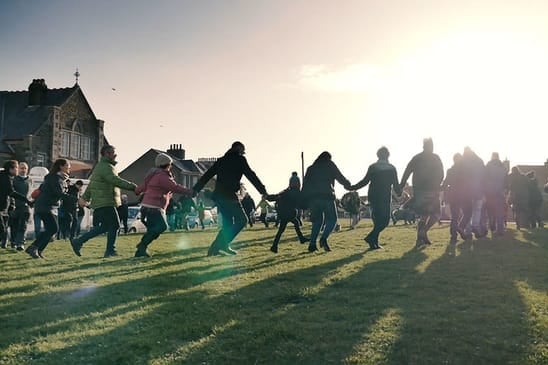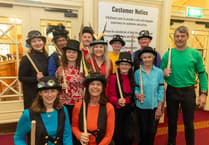The ‘Foolish Fortnight’ a time rich in Celtic tradition, will draw to a close this week.
The Christmas period known as the Foolish Fortnight or ‘Yn Kegeesh Ommidjagh’ would run from Black Thomas’ Eve, December 21, and would end on old Christmas day, or Shenn Laa Nollick, the 12th night, January 6.
A traditional Christmas Eve service would be held January 5 and was followed by the ‘Oie’ll Verrey’ where male singers performed long, serious Manx Gaelic carvals, while youths threw parched peas at them.
People would then go to the ale-house for a glass of spiced ale and before leaving they would sing a traditional song.
Early the next morning, hired fiddle players would wake everyone up on Christmas morning with a lively jig.
Christmas Day, which would draw the fortnight to an end, saw two of the strangest traditions.
Amidst the final drinking and dancing there was the metaphorical ‘Cutting off the Fiddler’s Head’ where the fiddler would lay his head on a woman’s lap and make prophesies of who would pair with whom over the coming year.
These festivities would be interrupted by the Laare Vane, a person hidden under a sheet controlling a horse’s head.
This ‘White Mare’ would go around attacking people snapping its jaws until it was chased from the room.
This symbol was derived from Celtic Britain, where the horse was a symbol of power and fertility, with animals that had the power to cross between this world and the underworld being portrayed as white or grey.
This tradition would therefore represent the return of the horse from the underworld.
The practice had dwindled by the mid-19th century, although in the run up to modern Christmas Day, the ‘White Boys’ incorporate this tradition with one of their members wearing a horse’s head.
Other traditions that took place in the ‘foolish fortnight’ were Hunt the Wren which is still popular today, and sees communities gather across the island to dance and sing around the streets.
The practice, dating back to pre-Christian times, is centred on a the bird the wren, which was hunted and then danced through the streets on a special pole. Nowadays it is a replica.
Not so common now was the mollag bands.
These were groups of young lads who roamed the towns making ‘a rare din’ singing, dancing and playing homemade instruments, carrying mollags, inflated sheep’s bladders, with which they hit anyone who got too close, according to Culture Vannin.
The aim was to make money.


.jpeg?width=209&height=140&crop=209:145,smart&quality=75)


Comments
This article has no comments yet. Be the first to leave a comment.